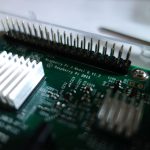
Introduction
Raspberry Pi, a credit card-sized and versatile single-board computer, has become synonymous with versatile computing––thanks to its affordable hardware and the robust Raspberry Pi OS (formerly called Raspbian). Its flexibility and community support have made it a favourite computing tool among hobbyists, educators, and professionals. However, the beauty of Raspberry Pi lies not just in its official operating system but in the myriad of alternatives available, offering diverse functionalities based on user-specific needs. This comprehensive guide considers the most popular Raspberry Pi OS alternatives and explores expert tips to choose the best one for your needs and skill levels.
Let’s Understand – Why Consider a Raspberry Pi OS Alternative Operating System?
The official Raspberry Pi OS is a general-purpose interface, providing a stable and user-friendly environment for learning programming and undertaking basic computing tasks. However, users looking for specialised functionalities, improved performance, or a different user experience might find alternatives more appealing. Alternative OSes offer optimised performances, specialised tools, advanced networking capabilities, and better security and other unique features that may better suit particular applications. With various OS alternatives available designed to meet different needs, users can find one that perfectly fits their project requirements, skill levels, and expectations.
Most Advanced and Popular Raspberry Pi OS Alternatives
While Raspberry Pi OS is the official operating system recommended for most users, numerous alternatives cater to different needs and preferences. Among these, the most popular Raspberry Pi OS alternatives include:
Ubuntu MATE – Ideal for desktop users looking for a full-featured Linux experience
Ubuntu MATE, enriched with pre-installed applications and supports a vast repository of additional software, offers a user-friendly desktop environment. It is an excellent alternative for those who are accustomed to a traditional desktop interface but want something that runs smoothly on the Raspberry Pi. Ubuntu MATE is particularly well-suited for educational purposes and older computers due to its low resource requirements and accessibility features.
RISC OS – Best for enthusiasts interested in exploring a non-Linux OS
Originally developed by Acorn Computers in Cambridge, England, RISC OS is a lightweight and fast operating system, distinct for its efficiency and simplicity. It uses a unique windowing system for managing applications, making it significantly different from Unix-based systems. RISC OS offers low latency and a high degree of control over hardware, making it particularly appealing to those who need real-time processing or embedded systems development.
OSMC (Open Source Media Center) – Perfect for users interested in converting their Raspberry Pi into a media center
OSMC is a free and open-source media player based on Kodi. Additionally, it provides a sleek interface and is designed to be navigated with a remote control, making it perfect for setting up a home theater PC. OSMC supports multiple plugins for enhanced functionality and can play media from local storage, network-attached storage, and the internet, making it a versatile choice for media enthusiasts.
DietPi – Suitable for users needing a lightweight, optimised OS for server or minimal desktop use
DietPi is a highly optimised, lightweight version of Debian designed to provide excellent performance on low-powered devices like the Raspberry Pi. Its unique feature is its software installation tool, allowing users to install optimised software quickly and easily, tailored to limited hardware resources. However, this makes it ideal for setting up a personal web server, private cloud, or even a VPN without needing extensive Linux knowledge.
FreeBSD – For advanced users looking for Unix-like operating systems with robust network services
FreeBSD is not Linux; it’s a Unix-like operating system focused on features, speed, and stability. It is well-known for its advanced networking, performance, and security features, which make it suitable for both servers and desktops. FreeBSD’s Raspberry Pi version offers a unique alternative for those wanting to experiment with Unix-like systems and needs an OS that supports a multitude of applications and network configurations.
Lakka – Popular amongst gamers for turning their Raspberry Pi into a retro gaming console
Lakka transforms your Raspberry Pi into a powerful retro gaming machine. It uses the RetroArch emulator and the Libretro ecosystem to emulate a wide variety of consoles and arcade systems. Lakka is easy to set up and can be controlled with a gamepad. Moreover, its user interface is optimised for gaming and does not require a keyboard and mouse, offering a true console-like experience.
Pidora – Suitable for those who prefer Fedora’s ecosystem
Pidora is a Fedora remix optimised for the Raspberry Pi. It brings Fedora’s cutting-edge features and software repositories to the Raspberry Pi, making it an excellent candidate for those familiar with Fedora or Red Hat systems. Pidora supports several development tools and languages, benefitting developers looking to build applications directly on their Pi.
Tips and Considerations for Choosing the Right OS for Your Raspberry Pi
Choosing the right operating system is often a daunting task affecting your project’s success and efficiency. Considering the given tips will ensure you select the best OS for your project needs and skill levels:
- Identify Your Project Requirements – The first step in selecting the right OS for your Raspberry Pi is to determine what you will use the Raspberry Pi for. Different OS options offer varied compatibility and are better suited for different tasks. For example, if you are focusing on learning programming, you might prefer Raspbian. For media center functionality, OSMC or LibreELEC might be better choices.
- Consider the User Interface (UI) – Opt for suitable UI as some operating systems, like Raspberry Pi OS, offer a user-friendly graphical interface, which is ideal for beginners. Others might be command-line only, which could be more suitable for advanced users or specific applications like network servers.
- Performance Features – The performance features of your OS include looking for its light weight, stability, and speed. If you’re working with a Raspberry Pi with limited hardware capabilities, consider a lighter OS that requires fewer resources, such as DietPi or Tiny Core Linux. Also, look for a well-optimised OS to ensure smooth operation.
- Community and Support – An active community and good documentation can be invaluable, especially when you encounter issues. Raspberry Pi OS, for instance, has a vast community and extensive documentation. Check if the OS is regularly updated with security patches and new features, which can significantly impact your project’s long-term viability.
- Special Features and Flexibility – Some users might need the flexibility to customise the OS extensively. In such cases, a Debian-based OS like Raspberry Pi OS offers great versatility. OSs with pre-installed software packages can save time, especially in educational or development settings.
- Experimentation – Since SD cards are relatively inexpensive, consider experimenting with different operating systems to see which one best fits your project. This multi-test approach allows a direct comparison of performance, usability, and feature set.
- Security Considerations – Depending on the use case, such as running a server, look for an OS with robust security features and configurations to protect your data and network.
Takeaway
With a plethora of operating systems available for Raspberry Pi, users have the freedom to tailor their computing experience to suit their specific needs and preferences. Each OS has its distinct advantages and capabilities, where the suitable choice depends on users’ particular needs and familiarity with Linux systems. Exploring these alternatives and understanding their selection parameters can maximise the capabilities of your Raspberry Pi, turning it into exactly the tool you need it to be.





















